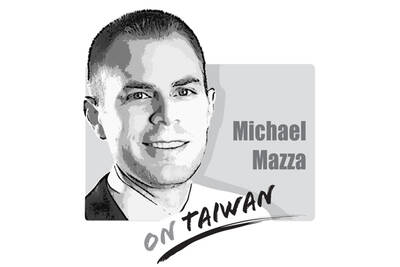The scandal over tranquilizers being given to preschool children in New Taipei City is becoming increasingly heated. This case, involving feeding narcotics to children to keep them quiet so their teachers could rest, has come as quite a shock.
Media reported that several children have tested positive for residues of two sedative classes — barbiturates and benzodiazepines.
Barbiturates are sedative and hypnotic medications that are legally classed as Schedule 3 restricted medicines and category 3 narcotics. As their half-life is about 100 hours in adults and a little longer in children, the concentration is often too low to detect in a blood test conducted after several days or weeks — it can only be detected by testing a person’s urine or hair.
Benzodiazepines are another class of sedative and hypnotic drug, classed as a category 4 narcotic. Their half-life depends on how long it is effective. They might become undetectable after a few days.
However, the question that concerns most people is how the preschool could obtain controlled drugs so easily, while government departments cannot source the drugs’ origins.
Media and people interviewed about the incident have said that the barbiturates that were given to the children were obtained from compound or single medicines that physicians prescribed for sick children.
This opinion requires clarification. Medical barbiturates are Schedule 3 restricted medicines, so the person who receives them must present a prescription along with an identity card, and sign for the drugs.
The transaction must be logged. Local government health departments spot-check hospitals and clinics that have received restricted medicines, and those who breach the regulations are fined at least NT$60,000.
Therefore, it is impossible for hospitals and clinics to casually dispense restricted medicines without leaving a paper trail.
It is commonplace for preschools to give children medicine that has been prescribed to them.
However, they would always do so following a doctor’s prescription given to the school by parents. Teachers would never take out a bunch of colorful medicines and feed them to children, let alone those containing controlled drugs of unknown origin.
Therefore, the drugs might have come from someone who obtained them in accordance with National Health Insurance (NHI) regulations: They could have come from a pharmacy that sells drugs illegally on a self-paid basis without registering the transaction, or from a hospital or clinic that illegally dispenses drugs on a self-paid basis — such as through a prescription under the guise of reimbursement — or even from illegal online purchases.
Judicial departments and competent health authorities should trace the source of the drugs as soon as possible and severely punish any lawbreakers.
Until the source of the drugs is found, it would be better not to accuse anyone. No legitimate physician would prescribe sedative hypnotic drugs such as barbiturates to children unless they suffer from epilepsy, nor would they prescribe barbiturates to children suffering from common illnesses.
If they really did prescribe such medicines, their hospital or clinic would upload the prescriptions daily to the NHI’s database.
Details can easily be retrieved from hospital or clinic records where children are treated and from the NHI database. Commentators should desist from idle speculation to avoid spreading fear.
Lin Yung-zen is president of the Taiwan Primary Care Association and a supervisor of the Taiwan Pediatric Association.
The US Senate’s passage of the 2026 National Defense Authorization Act (NDAA), which urges Taiwan’s inclusion in the Rim of the Pacific (RIMPAC) exercise and allocates US$1 billion in military aid, marks yet another milestone in Washington’s growing support for Taipei. On paper, it reflects the steadiness of US commitment, but beneath this show of solidarity lies contradiction. While the US Congress builds a stable, bipartisan architecture of deterrence, US President Donald Trump repeatedly undercuts it through erratic decisions and transactional diplomacy. This dissonance not only weakens the US’ credibility abroad — it also fractures public trust within Taiwan. For decades,

The ceasefire in the Middle East is a rare cause for celebration in that war-torn region. Hamas has released all of the living hostages it captured on Oct. 7, 2023, regular combat operations have ceased, and Israel has drawn closer to its Arab neighbors. Israel, with crucial support from the United States, has achieved all of this despite concerted efforts from the forces of darkness to prevent it. Hamas, of course, is a longtime client of Iran, which in turn is a client of China. Two years ago, when Hamas invaded Israel — killing 1,200, kidnapping 251, and brutalizing countless others
Taiwan’s first case of African swine fever (ASF) was confirmed on Tuesday evening at a hog farm in Taichung’s Wuci District (梧棲), trigging nationwide emergency measures and stripping Taiwan of its status as the only Asian country free of classical swine fever, ASF and foot-and-mouth disease, a certification it received on May 29. The government on Wednesday set up a Central Emergency Operations Center in Taichung and instituted an immediate five-day ban on transporting and slaughtering hogs, and on feeding pigs kitchen waste. The ban was later extended to 15 days, to account for the incubation period of the virus
The government and local industries breathed a sigh of relief after Shin Kong Life Insurance Co last week said it would relinquish surface rights for two plots in Taipei’s Beitou District (北投) to Nvidia Corp. The US chip-design giant’s plan to expand its local presence will be crucial for Taiwan to safeguard its core role in the global artificial intelligence (AI) ecosystem and to advance the nation’s AI development. The land in dispute is owned by the Taipei City Government, which in 2021 sold the rights to develop and use the two plots of land, codenamed T17 and T18, to the